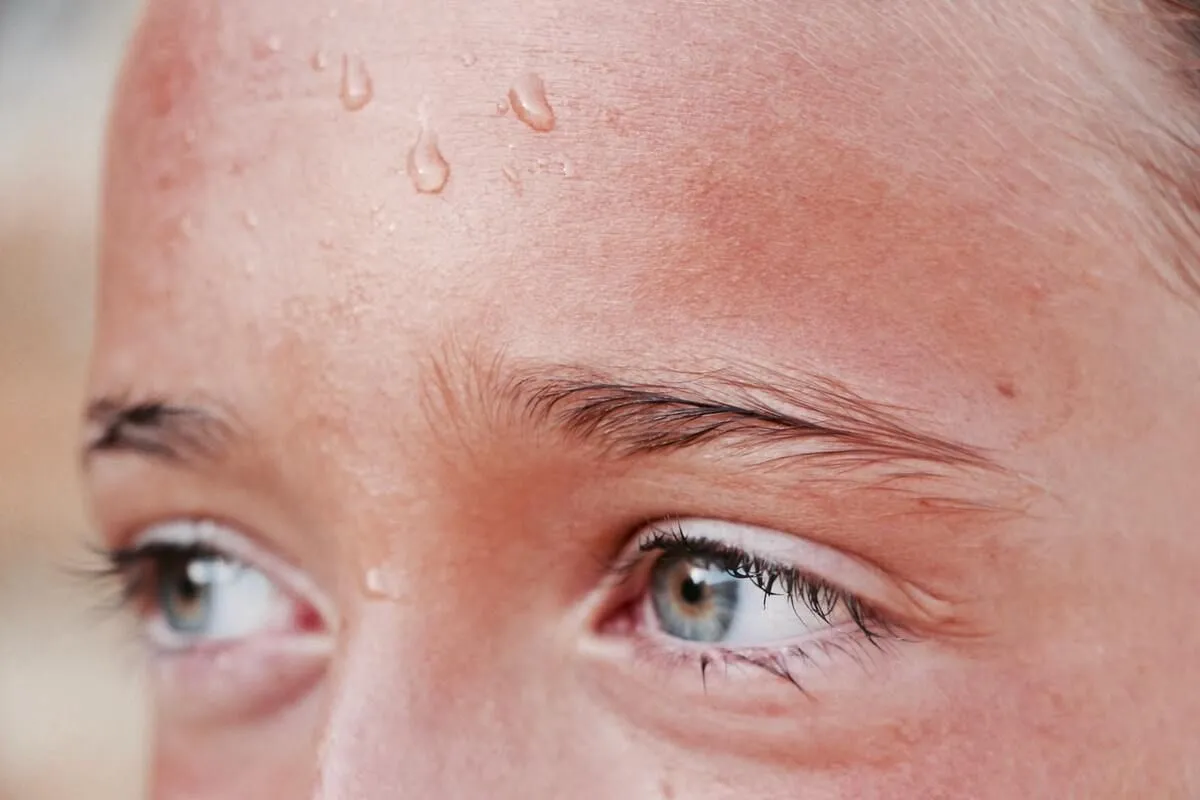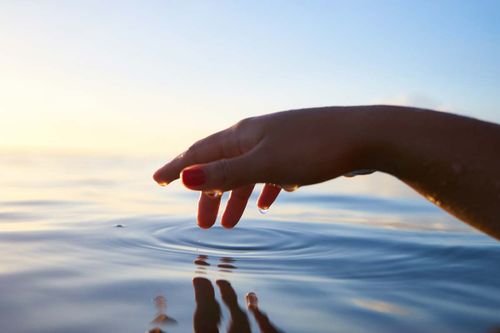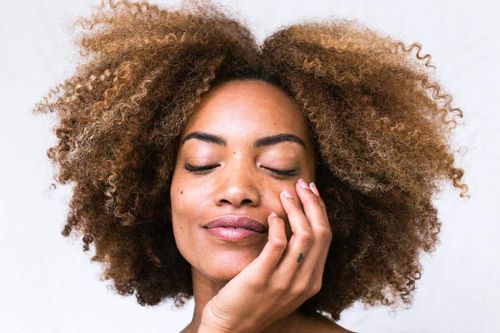FOR ALL AGES
You probably don't hear the term “integumentary system” everyday, but you'll be surprised to know that you see and touch it all the time.
Think of the integumentary system as a network of your skin and its appendages that work together to protect your body from harm. This list is full of information about the integumentary system, organs and functions of the different parts of the system such as skin, hair and nails.
The layers of the integumentary system act like an armor that shields our internal organs, so our body can perform like a well-oiled machine.
If you love learning about the human body and how it works, you can check our other lists on fun facts about the respiratory system and facts about the digestive system.
The integumentary system has five major components: the skin, skin appendages, sebaceous glands, mucocutaneous junctions and breasts.
1. Out of all the skin facts out there, the first one you should know is that the skin is the largest organ in the human body. An average adult's skin can cover an area of two square meters.
2. Weighing about nine lbs, the skin has over 11 miles of blood vessels.
3. Around 15% of your body weight is attributed to the skin.
4. The thinnest part of the skin system can be found on the eyelids while the thickest is on the feet.
5. The skin appendages consist of hairs, hair follicles, nails, sweat glands, and sebaceous glands.
6. On average, a person can grow 120,000 strands of head hair.
7. Your hair gets longer by one centimeter every month.
8. The nails, which are hardened keratinocytes, are rich in calcium.
9. If you’re wondering why you need to regularly trim your nails, it’s because they grow 0.5mm every week.
10. The body also has a mucocutaneous boundary where mucosa transitions to skin, this occurs in areas including nostrils and lips.

Skin is more than just color, thickness, or texture. With all its thousands of pores and hair follicles, the structure of the integumentary system is complex. In fact, the human body has three layers of skin: the epidermis, the dermis, and the subcutaneous layer. It has six primary functions that we will learn about now.
11. One function of the skin is to protect the human body from radiation, toxins, and other harmful pollutants.
12. Thanks to the pores scattered all around the skin, the body can absorb water, oxygen, vitamins, and acids.
13. You may not always avoid toxins since you can consume or breathe them in. However, the skin releases them through the sweat glands and pores, making this one of the main functions of the integumentary system.
14. Creams and soaps are not always the reason why the skin stays soft and supple. More importantly, this is possible because of the sebum, which is a mixture of oils the skin releases.
15. One of the functions of the skin is to regulate body temperature. It cools you off through the evaporation of sweat on the skin while it gives you warmth by shivering when it’s too cold.
16. Millions of nerve endings are connected to the skin, allowing you to feel different sensations such as pain, heat and cold.
If there’s one part of the human body that is strategic, it’s the integumentary system. You may not notice it, but it’s been making your life easy every single day.
17. When you’re out and about on a hot day, the skin protects you from harmful UV rays, which can cause an array of diseases.
18. Your hair defends your skin from the sun while it saves up body heat to keep you warm during winter.
19. More than always being on fleek, your eyebrows are there to prevent sweat from getting into your eyes.
20. Can you imagine working with your hands and feet without your nails? These hardened keratinocytes are there to ensure that your fingers and toes are protected when you’re scraping or handling objects.
21. There’s a gland called ceruminous that is responsible for producing ear wax. Although we tend to clean them out, this wax lubricates the eardrum and provides a layer of protection against pathogens that could get into the ear canal.

Integumentary systems prove that the human body is truly a wonder. If you have ever wondered how we feel or how much we sweat, you’ll be amazed by these interesting facts about the integumentary system, the largest organ of the human body.
22. Hair follicles work as the transmitter of sensations and body temperature. They sense the changes in the environment and send the signal to the neurons, which then carry the message to the brain through the central nervous system. That’s how we react to any sensations we feel.
23. Even if you’re resting, you can fill a 500ml bottle with your sweat. If the body temperature is higher or if you’re physically active, your sweat can increase up to 1.5 liters per hour.
24. Did you know how many skin cells an average person has? 300 million!
25. About 30,000 to 40,00 dead cells continuously fall off the integumentary system every minute.
26. Because of that, if you inspect and study the dust and dirt collected around your house, you’ll find that more than 50% of it is just dead skin.
27. Don’t worry though if you shed thousands of dead cells, because the integumentary system has the ability to develop a whole new layer of skin every 28 days.
28. Over 1,000 species of bacteria are living in your skin.
29. A scar is formed when the skin heals itself from severe damage. It looks different because it doesn’t have hair and sweat glands that the normal skin tissue has.
30. A single strand of hair consists of the hair shaft, the root, and the bulb. These parts are responsible for how your hair looks.
31. People have different skin colors, due to varying amounts of melanin. Melanin is the substance that gives the skin its color. Darker skin produces more melanin that is tightly clustered together while the melanin in lighter skin forms near the nucleus of keratinocytes.
32. Birthmarks are formed because of extra melanin on that area, making it a different color from the regular layer of skin. This is why birthmarks stand out.
33. Be wary of dust mites, they feed on skin cells since dust particles settle on the skin and other surfaces. Scientifically called dermatophagoides, the dust mites consume keratin, and they could cause allergies. Check your mattresses and pillows regularly because they tend to stay in these places.
34. If you're interested in studying the integumentary system and making a career out of it, then dermatology is the branch of medicine you could pursue. This field delves deep into the integumentary system, especially the hair and the skin.
35. While there are similarities in the way the hair grows on the lips, palms, and feet, people have different hair patterns on the body. This is because genetics plays a role in determining a person's hair length, color, texture, type and volume.
36. The skin works together with the liver and the kidneys to ensure that your body has enough Vitamin D. Upon exposure to sunlight, the skin begins producing Vitamin D, which the liver and the kidneys will carry throughout the body.
37. One of the best fun facts about the skin is that having a massage is good for the integumentary system as it helps remove dead skin cells. The massage therapist's touch will also activate the skin's receptors to signal the brain to relax.
38. Acne, athlete's foot, burns, dermatitis, psoriasis, skin cancer, vitiligo and warts are all different types of skin diseases.
39. Calluses are a tougher part of the skin caused by the unusual thickening of the epidermal layer.
40. We usually use our hands to feel an object, and that's because our fingers are more sensitive due to special receptors that are gathered in these areas. These free nerve endings are called Meissner's corpuscles, they're the ones that help us find and touch things even in the dark.
41. Sweat isn't really to blame when someone gets stinky since sweat is actually odorless. The culprit for body odor is the bacteria that meets the sweat on the surface of the skin.
42. Have you ever had goosebumps and wondered what made the hairs on your skin rise? This phenomenon is caused by small muscles called arrector pili. These muscles, which extend from the dermis to the hair follicles, contract when you experience any extreme physical or emotional changes.
43. Everyone should be mindful of the changes in your skin, as it could indicate a change in your overall health.
Here at Kidadl, we have carefully created lots of interesting family-friendly facts for everyone to enjoy! If you liked our suggestions for integumentary system facts, then why not learn more about the world of science with our chloroplast facts and mitochondria facts?
Read The Disclaimer
At Kidadl we pride ourselves on offering families original ideas to make the most of time spent together at home or out and about, wherever you are in the world. We strive to recommend the very best things that are suggested by our community and are things we would do ourselves - our aim is to be the trusted friend to parents.
We try our very best, but cannot guarantee perfection. We will always aim to give you accurate information at the date of publication - however, information does change, so it’s important you do your own research, double-check and make the decision that is right for your family.
Kidadl provides inspiration to entertain and educate your children. We recognise that not all activities and ideas are appropriate and suitable for all children and families or in all circumstances. Our recommended activities are based on age but these are a guide. We recommend that these ideas are used as inspiration, that ideas are undertaken with appropriate adult supervision, and that each adult uses their own discretion and knowledge of their children to consider the safety and suitability.
Kidadl cannot accept liability for the execution of these ideas, and parental supervision is advised at all times, as safety is paramount. Anyone using the information provided by Kidadl does so at their own risk and we can not accept liability if things go wrong.
Kidadl is independent and to make our service free to you the reader we are supported by advertising.
We hope you love our recommendations for products and services! What we suggest is selected independently by the Kidadl team. If you purchase using the buy now button we may earn a small commission. This does not influence our choices. Please note: prices are correct and items are available at the time the article was published.
Kidadl has a number of affiliate partners that we work with including Amazon. Please note that Kidadl is a participant in the Amazon Services LLC Associates Program, an affiliate advertising program designed to provide a means for sites to earn advertising fees by advertising and linking to amazon.
We also link to other websites, but are not responsible for their content.
Was this article helpful?



Browse Category

We’ll send you tons of inspiration to help you find a hidden gem in your local area or plan a big day out.



Check your inbox for your latest news from us. You have subscribed to:
Remember that you can always manage your preferences or unsubscribe through the link at the foot of each newsletter.